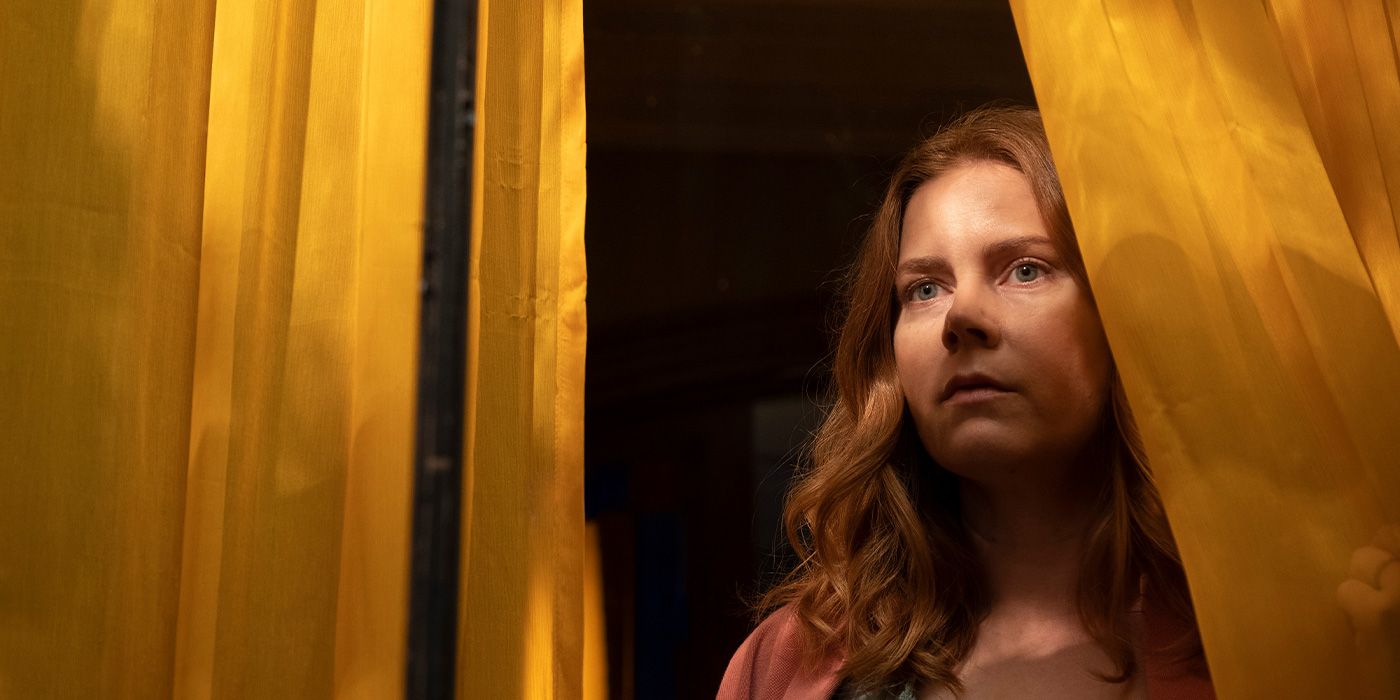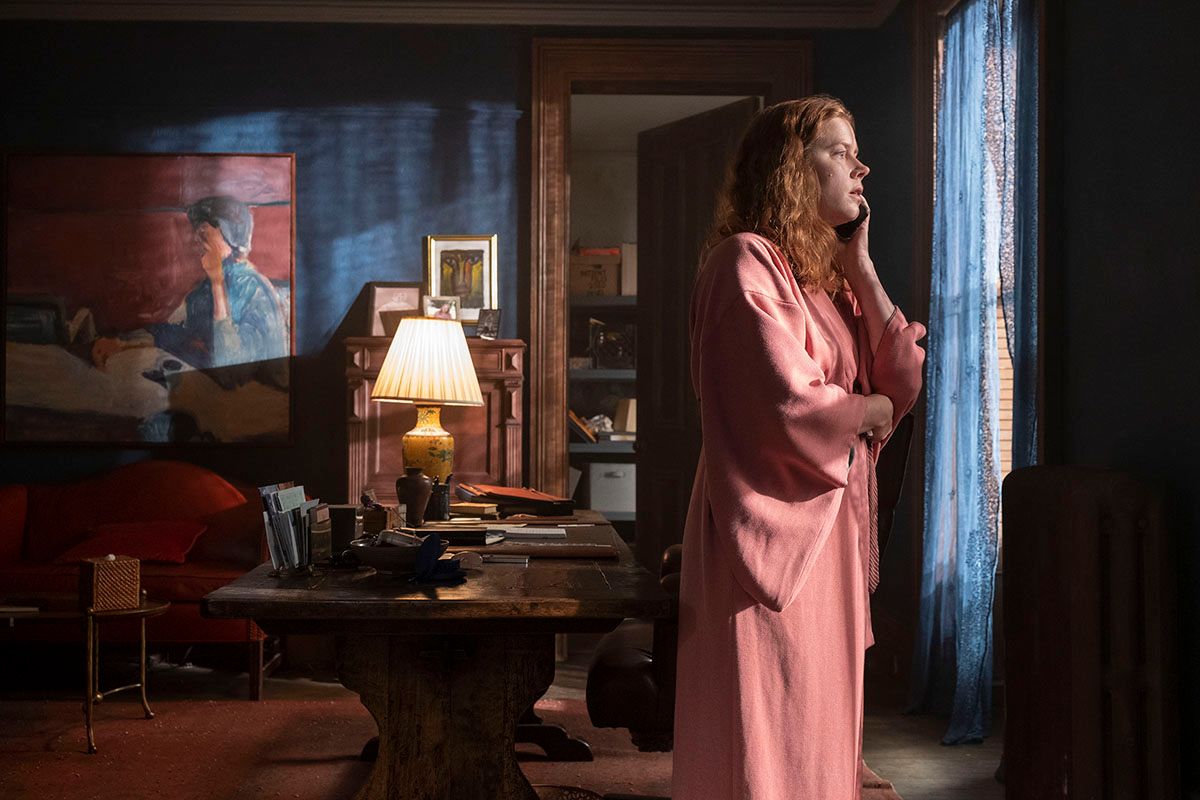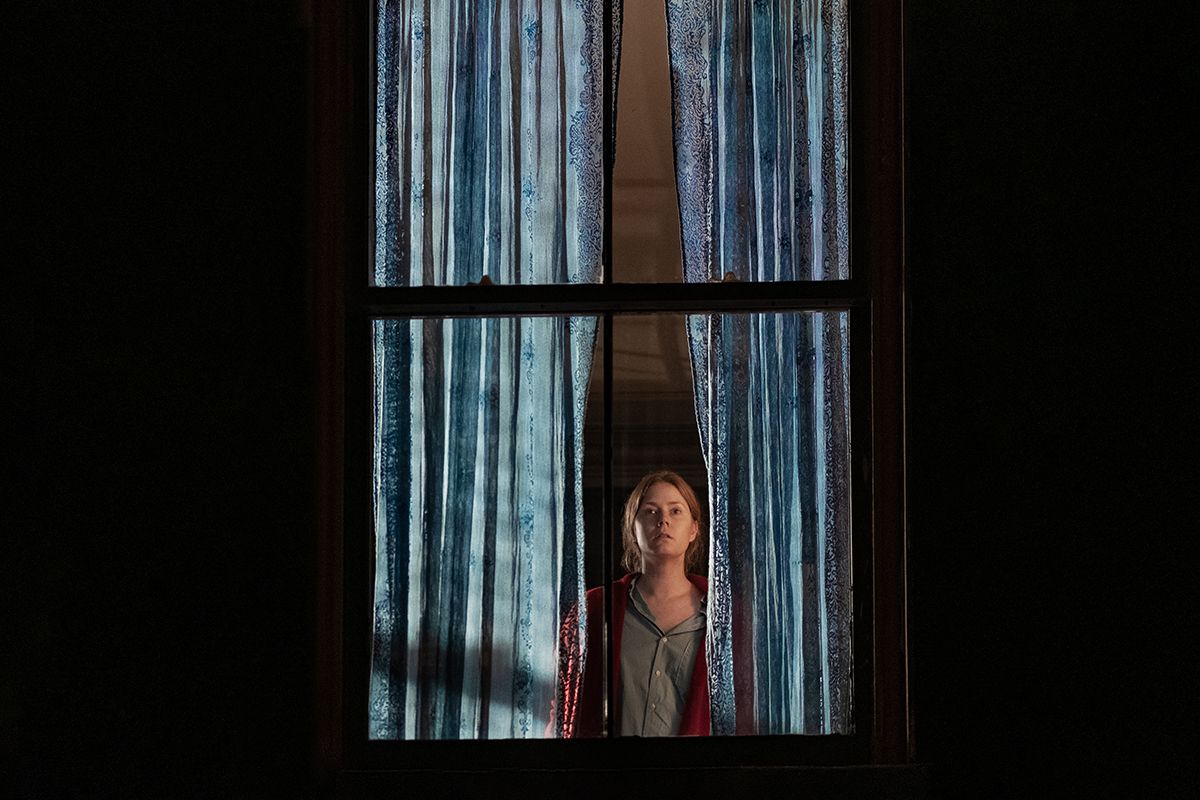The Woman in the Window knows it's indebted to Alfred Hitchcock’s 1954 classic Rear Window, and director Joe Wright tips his hat to that movie within the first two minutes and many times after. And if you’re looking to imitate any director, you could do far worse than Hitchcock. The main problem with Wright’s film is that it seems confused exactly about the stakes of his suspense story, and frequently runs towards being the story of a woman who’s mentally unraveling. That psychology makes for a good movie on its own merits, but the film is so overbearingly obvious in what it’s doing that its structure and style frequently overshadow any humanity the picture may offer. And yet there’s still a compelling core idea about the intersection of guilt, trauma, and escapism that makes The Woman in the Window a compelling story until the film’s climax blows those themes to hell and we’re left with nothing.
Dr. Anna Fox (Amy Adams) is an alcoholic who frequently mixes wine with the medication that her doctor prescribed to deal with her agoraphobia. She’s separated from her husband (Anthony Mackie) who has custody of their daughter (Mariah Bozeman), and Anna mostly lives a sad, solitary existence. One day, a new family, the Russells, move in across the street from Anna’s New York City brownstone. She befriends the family’s son Ethan (Fred Hechinger) before having a nice evening with Ethan’s mother, Jane Russell (Julianne Moore). Anna then resolves to keep watch on the family, suspecting abuse from the father, Alistair (Gary Oldman). When Anna believes she’s witnessed Jane’s murder at the hands of Alistair, she calls the cops only to learn that a completely different woman (Jennifer Jason Leigh) claims to be Jane Russell and that Anna may have a tenuous grasp on reality.
Even when Wright makes bad movies (and he’s certainly had some misfires like The Soloist and Pan), he’s a visually interesting filmmaker, and it’s great to see him play inside the confines Anna’s home, using every window and angle to pull us deeper into her tortured psyche. The problem is that the tortured psyche is an end unto itself. The film is so desperate to preserve its inevitable 2nd-act turn/reveal that Anna is almost rendered into a cipher despite Adams’ committed performance to her character’s decay.
Adams has no problem playing sad and broken, but when she's trapped not only physically but by a narrative bent on hiding the truth of the character, her performance verges on self-parody. We know Adams is a great actor, but when you look at her performances in The Woman in the Window and last year’s Hillbilly Elegy, you see that she’s playing to the rafters, deprived of nuance or even a character arc. Every one of her scenes becomes the Oscar clip rather than giving her complex, intricate individuals like she got to play in films like Arrival, Nocturnal Animals, and The Master.
Adams has an amazing cast of supporting actors that also includes Wyatt Russell, Brian Tyree Henry, and Tracy Letts (who also is credited with the screenplay), and yet The Woman in the Window is frequently less than the sum of its parts. The supporting actors show up to sprinkle a little talent and prestige on the picture, but no one is really getting to play a fleshed-out individual worth caring about, and the picture seems afraid to be about anything bigger than Anna’s psychosis, which it won’t explore in details because that would mean tipping its hand about the origin of the psychosis, and why deal with pain and trauma honestly when you can use it for a big reveal that the audience saw coming in the first ten minutes?
What’s most frustrating about that reveal is that it should serve as the film’s climax. If the film is really about Anna and what she’s dealing with, then the natural payoff is confronting the origin of her pain and how she plans to deal with it. But The Woman in the Window can’t quit its suspense-thriller genre, so it tries to have it both ways with a climax that’s stunningly stupid and borderline offensive. It’s a movie that wants to engender sympathy for Anna’s mental health while also turning around and saying that some people are just nuts, and therefore sub-human monsters. How do you differentiate between the traumatized and criminally insane? Doesn’t matter! Here are some thrills!
The Woman in the Window could have been a modest Hitchcock homage that never measured up to the talent of its artists, but the climax sinks the film so much lower because you can see that none of its emotional investment really mattered. Rather than questioning the value of escapism—of seeing a lonely woman lose herself in her voyeurism—The Woman in the Window unquestioningly indulges that escapism for nothing more than some cheap, forgettable thrills that undercut any kind of emotional resonance the story may have crafted in its preceding 80 minutes. For a film that wants to pay tribute to Rear Window, The Woman in the Window doesn’t even know where to cast its gaze.
Rating: D+



